When your dog starts whining, it can be tough to know what they are trying to communicate.
Whining can signal a range of emotions or needs, from simple boredom to something more serious. Recognizing the signs that your dog’s whining needs immediate attention is crucial for their well-being.
As a dog owner, being aware of these signs can help you respond appropriately and provide comfort when your furry friend needs it most.
It’s important to pay attention, as some reasons for whining might indicate health issues or emotional stress that require prompt action.
1) High-pitched crying during meals

When your dog cries in a high-pitched tone during meals, they may be trying to tell you something.
This sound can mean your dog feels excited or anxious about food.
If you notice this behavior, pay close attention to how your dog reacts at mealtime.
High-pitched crying could suggest they are feeling distressed or uncomfortable.
Sometimes, your dog’s crying can indicate they need help with their food.
They might be having difficulty chewing or swallowing, which can be a sign of a health issue.
If your dog’s crying seems urgent or continues beyond the meal, consider contacting your vet.
It’s important to rule out any underlying problems that could be causing this reaction.
Being aware of your dog’s vocalizations helps you better understand their needs.
Addressing high-pitched crying early can keep mealtime enjoyable for both of you.
Restless pacing at night

If your dog is pacing at night, it can be a sign that something isn’t right.
You may notice them moving around the house or going back and forth without settling down.
This behavior could mean they need more exercise during the day.
Dogs that don’t get enough activity may have excess energy that leads to restlessness.
Sometimes, older dogs may pace due to discomfort or health issues.
Conditions like arthritis can cause pain, making it hard for them to relax.
Anxiety is another common reason for night pacing.
If your dog feels insecure or stressed, they may struggle to stay still.
Keep an eye on their other behaviors too, such as whining or panting.
These can be additional signs that they need help.
If your dog’s pacing continues, it might be a good idea to talk to your vet.
They can check for any underlying health problems that may need attention.
Making your dog’s environment calm and safe can also help them feel more at ease at night.
Sudden change in bathroom habits
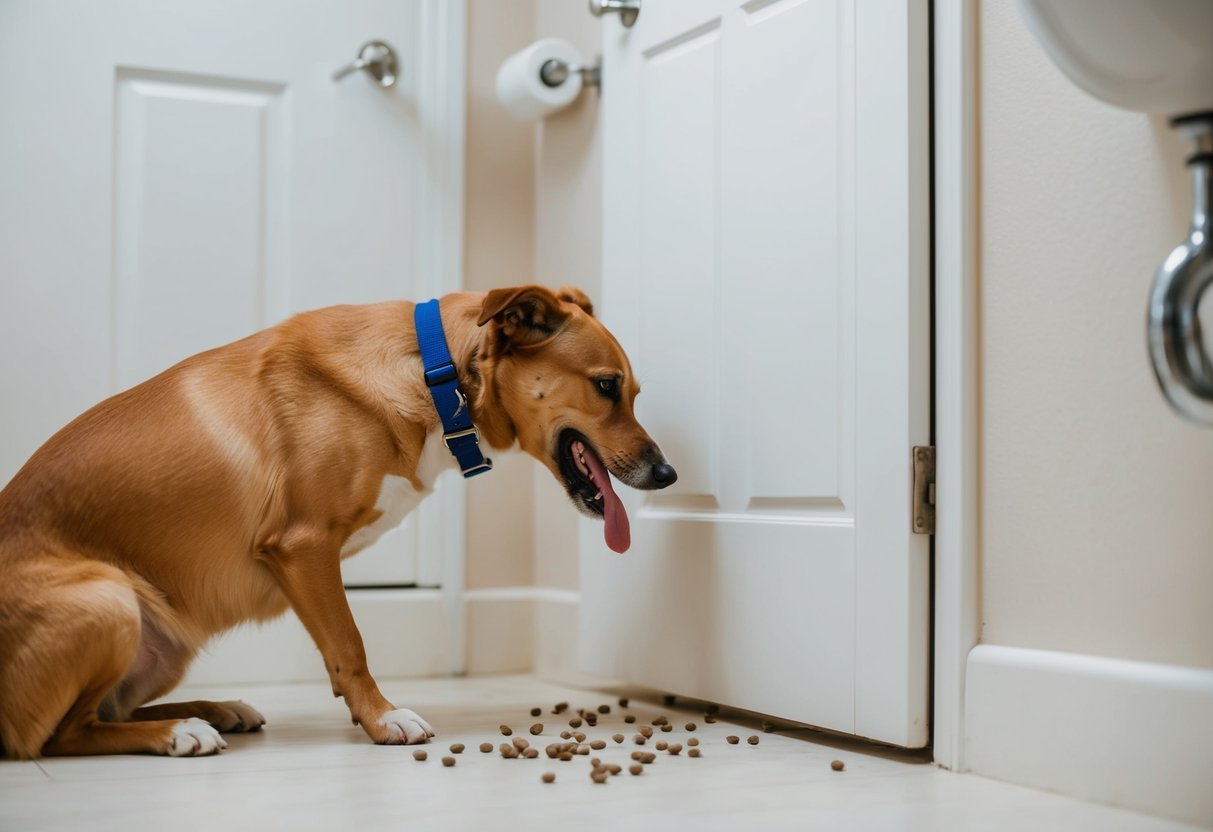
If your dog suddenly starts to have bathroom accidents inside, it might be a sign of a problem.
Pay close attention if this happens out of nowhere.
A change in bathroom habits can indicate stress, anxiety, or even health issues like infections or digestive problems.
If your pup is urinating or defecating more frequently, it’s important to take note.
Watch for other signs like straining to go or blood in the urine or stool.
These can be serious and should be addressed quickly.
Make sure to observe any patterns in their behavior.
If it continues, don’t hesitate to reach out to your vet.
They can help find the root of the issue.
Being aware of your dog’s habits will help you notice any changes.
Quick action can help keep your furry friend healthy and happy.
4) Aggressive whining around other pets
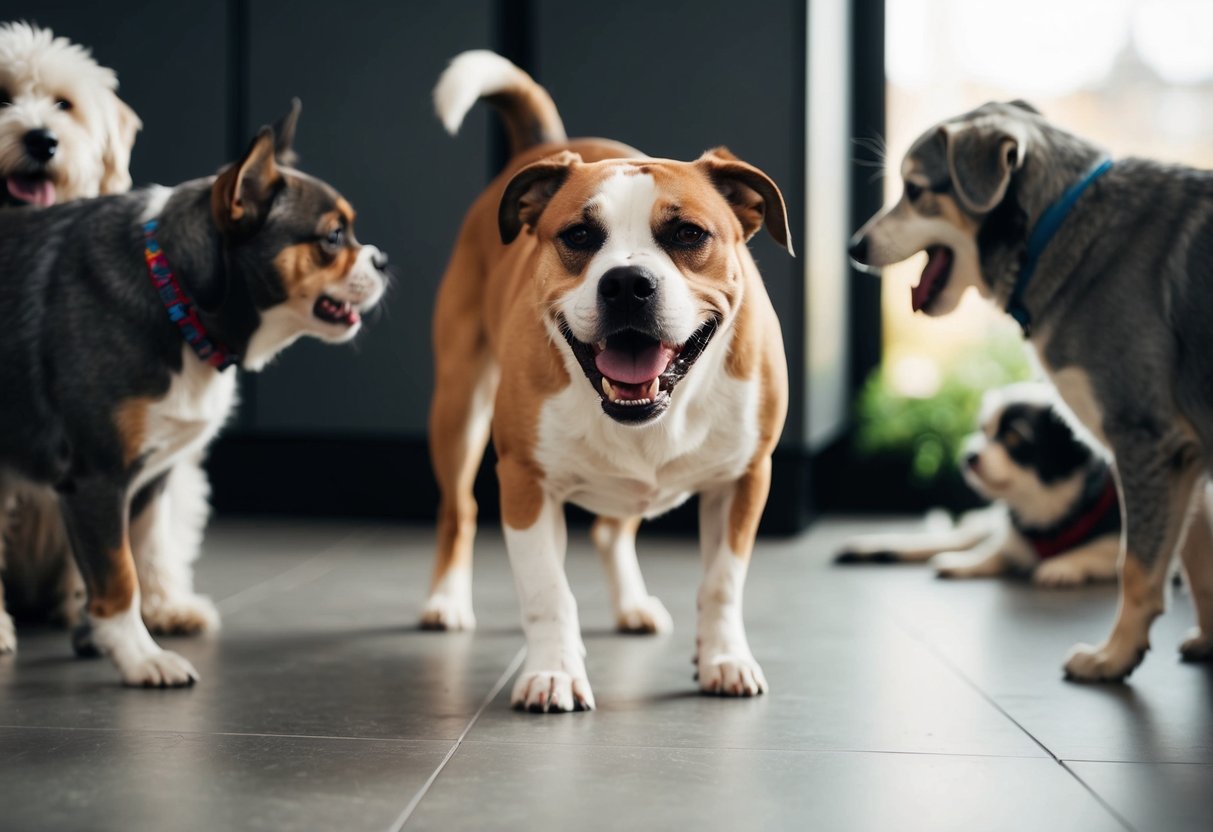
When your dog whines aggressively around other pets, it’s a sign that something might be wrong.
This behavior can happen when they feel threatened or frustrated.
If they are on a leash or separated from another dog, they may whine to show their desire to interact.
This frustration can lead to more intense whining, which can be a signal to you.
Pay attention to other signs that come with the whining.
If your dog is growling, showing their teeth, or lunging, it’s important to intervene.
Aggressive whining can also indicate anxiety or stress.
Your dog might feel overwhelmed in certain situations.
Ensuring your dog feels safe is key.
Try to create a calm environment when introducing your pet to others.
Keeping interactions positive can help reduce aggressive whining.
If the behavior continues, consider talking to a professional trainer.
They can provide specific strategies to help your dog feel more comfortable around other pets.
5) Persistent whining at the vet
When you take your dog to the vet, persistent whining can be a sign they are feeling stressed or uncomfortable.
This behavior may indicate anxiety about the environment or fear of medical procedures.
If your dog starts whining as soon as you enter the clinic, pay attention to their body language.
Signs like pinned ears or a tucked tail can suggest they are feeling scared.
Sometimes, whining can also indicate physical pain or discomfort.
If your dog whines consistently during the visit, it’s essential to communicate this to the vet.
They can assess whether there’s an underlying issue that needs attention.
Waiting in the exam room can be tough for some dogs.
Offering comfort through gentle petting or soothing words may help ease their anxiety.
If the whining continues, consider asking the vet about calming techniques or medications for future visits.
Your goal is to make the vet experience easier for both you and your dog.
6) Whining when left alone
If your dog whines when you leave, it could be a sign of separation anxiety.
Many dogs feel uneasy when separated from their owners and may express this through whining.
This behavior can start as a low whimper and escalate into more intense whining or barking.
It’s their way of asking for help and comfort.
Make sure your dog gets enough exercise before you leave.
A good walk or play session can help them feel calmer and more relaxed.
Consider leaving some toys or a puzzle feeder to keep your dog busy.
Engaging their mind can distract them from missing you.
If the whining continues, think about training techniques or consult a vet for advice.
With patience and consistency, you can help your dog feel more secure when alone.
7) Unexpected vocalization changes
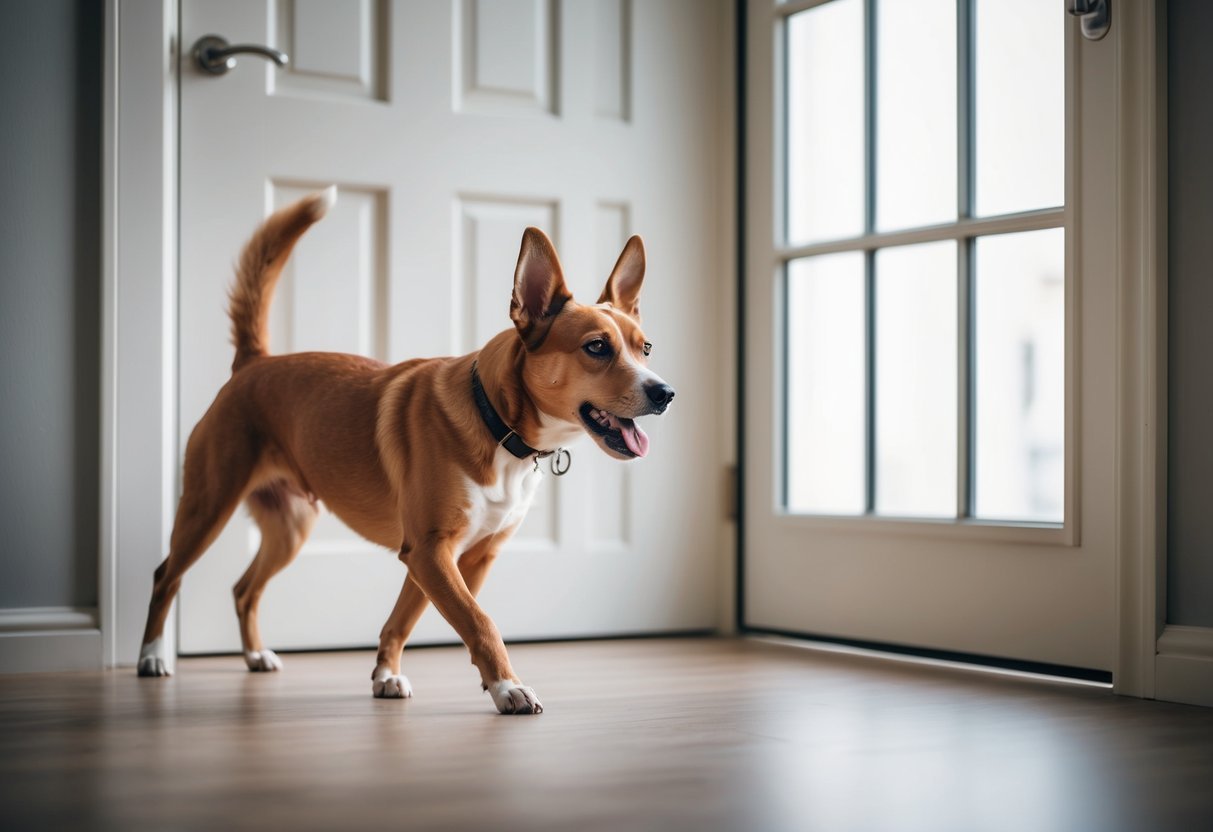
If your dog suddenly starts whining or barking more than usual, pay attention.
Changes in vocalization can signal distress or discomfort.
Your dog might be reacting to changes around them.
Loud noises, new pets, or moving to a new home can cause anxiety and lead to more vocalization.
Consider what’s different in your dog’s environment.
Also, age-related issues might play a role.
Older dogs can develop health problems that affect how they communicate.
Look for other signs that might indicate pain or illness.
It’s important to observe the context.
Are they whining when you leave the room? This could be a sign of separation anxiety.
If your dog is vocalizing in ways that seem strange, it’s a reason for concern.
Addressing these changes can help your dog feel more secure.
If you’re unsure about the cause, consult with your vet.
It’s better to be safe and ensure your furry friend is happy and healthy.
Understanding Canine Whining
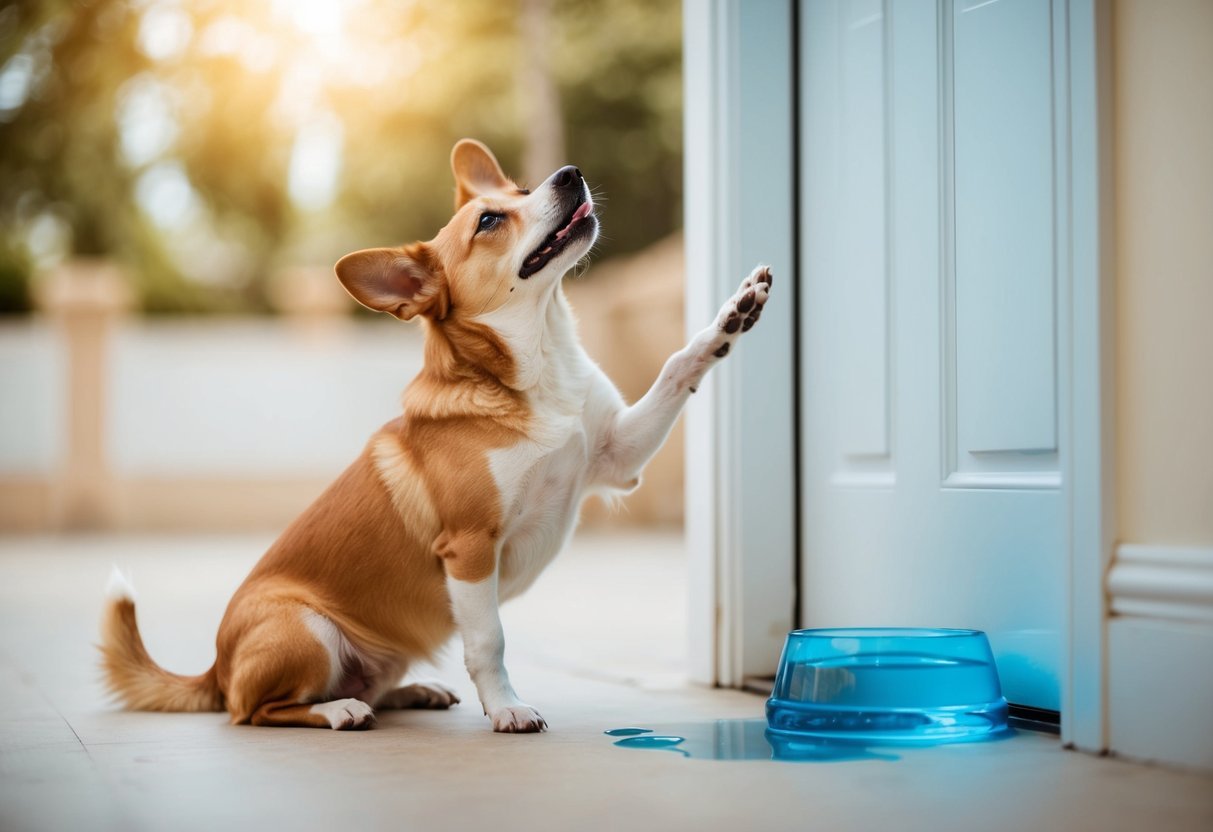
Whining is a common behavior among dogs and can indicate various emotions or needs.
It’s important to know when whining is normal and when it signals a problem.
Here’s what you should look for to better understand your dog’s behavior.
Normal vs. Concerning Behavior
Dogs often whine for normal reasons, like wanting attention or showing excitement.
This type of whining can be playful or gentle.
It might happen when they see you come home or when they want to play.
However, concerning behavior can be different.
If your dog is whining excessively, especially when combined with signs like pacing or hiding, it could indicate stress, fear, or pain.
For instance, if your dog whines and keeps looking at their food bowl, they might be hungry. Listening to the tone of their whine can provide clues about their emotional state.
Common Triggers of Whining
Several triggers can lead to whining in dogs.
Here are a few to keep in mind:
-
Separation Anxiety: Many dogs whine when left alone. This can worsen if they were suddenly left alone after being with you all day.
-
Interacting with Strangers: New people or loud environments can make your dog anxious. They may whine to express their discomfort.
-
Medical Issues: Pain or illness can make a dog vocal. If your dog suddenly starts whining more than usual, a vet visit might be necessary.
Understanding these triggers can help you address your dog’s needs effectively and ensure they feel safe and secure.
Emotional and Physical Indicators
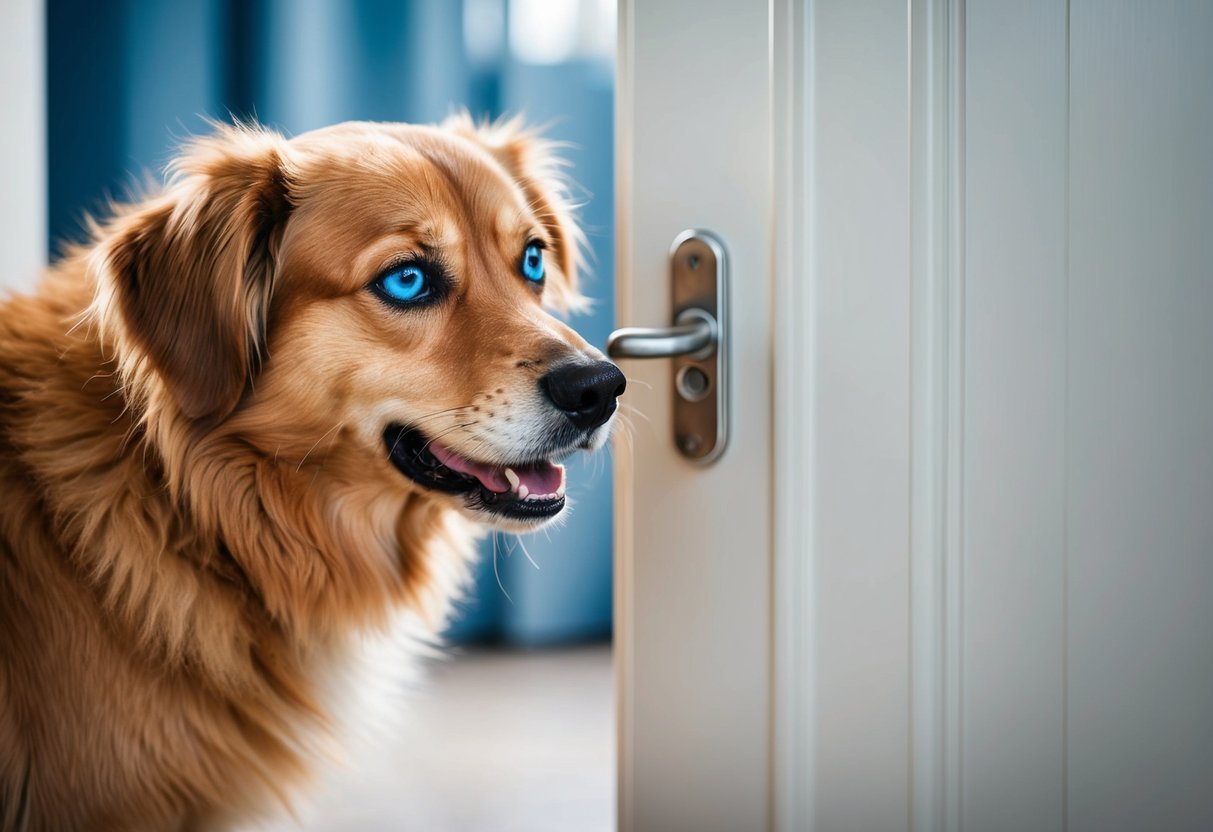
Paying attention to your dog’s body language and emotional state is crucial when trying to understand their whining.
Signs of distress can reveal whether your dog needs help or if they are simply seeking attention.
Reading Body Language
Your dog’s body language can tell you a lot about how they feel.
Look for these signs:
- Tail Position: A wagging tail usually means happiness, while a tucked tail can indicate fear or anxiety.
- Ears: Ears pulled back or flat against their head can signal discomfort or submission. Ears perked up show they are alert.
- Posture: A relaxed body posture means your dog is calm. If they are tense, it could indicate stress or discomfort.
If your dog is pacing or avoiding eye contact, these are red flags.
You might want to check for any signs of injury or illness.
Evaluating Emotional State
Emotional state is just as important as physical cues.
Dogs can experience a range of feelings from happiness to anxiety.
- Anxiety Signs: Excessive whining, shaking, or hiding can point to anxiety. If your dog shows these signs, they may need comfort or a safe space.
- Sadness versus Depression: Short-term sadness can pass with time, but depression lasts longer. Look for changes in appetite and interest in activities.
If you notice these symptoms, it is important to take action quickly.
Providing support through play or calming techniques can help your dog feel better.
Frequently Asked Questions
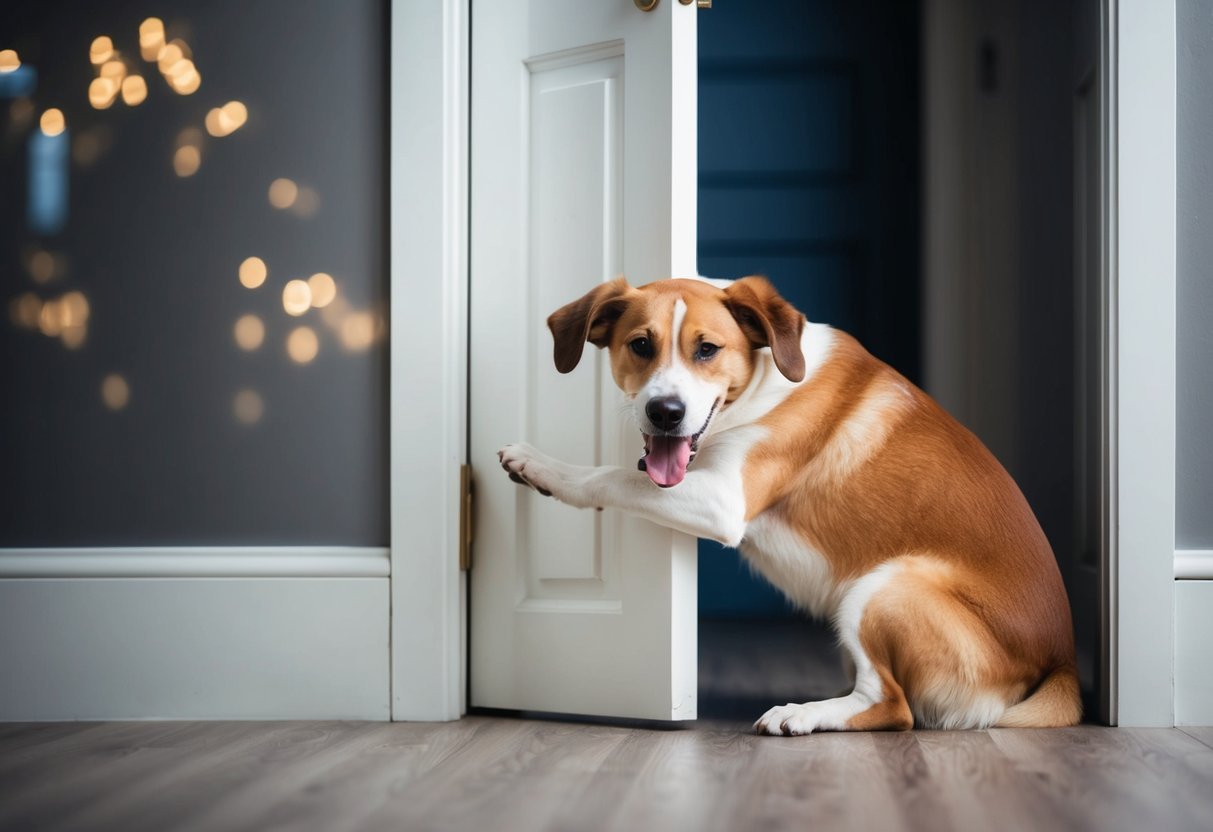
You may have questions about your dog’s whining and how to address it.
Here are some common concerns and their answers to help you understand your pup’s behavior better.
Why does my dog suddenly start whining so much?
Dogs can start whining for many reasons.
A sudden change might signal anxiety, discomfort, or a need for attention.
If there’s a new situation, like a move or a change in the family, it could cause stress in your dog.
What can I do to stop my dog from whining for attention?
To reduce attention-seeking whining, avoid giving in when it happens.
Instead, wait for your dog to be calm and reward that behavior.
Engaging them in play or offering a chew toy can also distract them.
How can I tell if my dog’s whining is for attention or something else?
You should observe the context of the whining.
If your dog whines when you’re busy or if it stops when you give it attention, it’s likely for attention.
If whining occurs with other signs like restlessness, it may indicate discomfort or distress.
At what point should a dog’s whining be a cause for concern?
If your dog’s whining is frequent and intense, it could be a sign of a bigger issue.
Pay attention to other warning signs, like changes in behavior or appetite.
If it lasts more than a few days or gets worse, consult your vet.
Why does my dog whine more at night?
Whining at night may stem from loneliness or anxiety.
If your dog is used to being around people during the day, nighttime can feel isolating.
Consider providing a comforting item, like a blanket or a favorite toy, to help ease their anxiety.
How do I know if I’m not giving my pup enough time and attention?
If your dog frequently tries to get your attention, it may be a clue that it needs more interaction.
Look for signs like destructive behavior or increased whining.
Scheduling regular playtime or walks can help meet your dog’s social needs.

